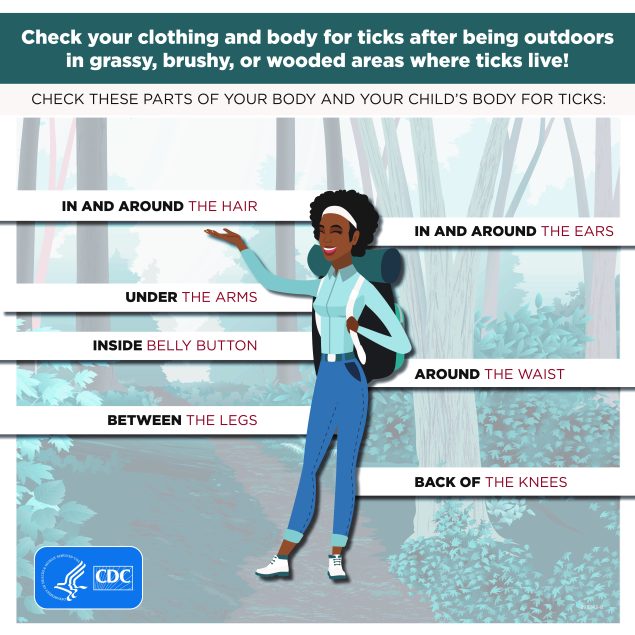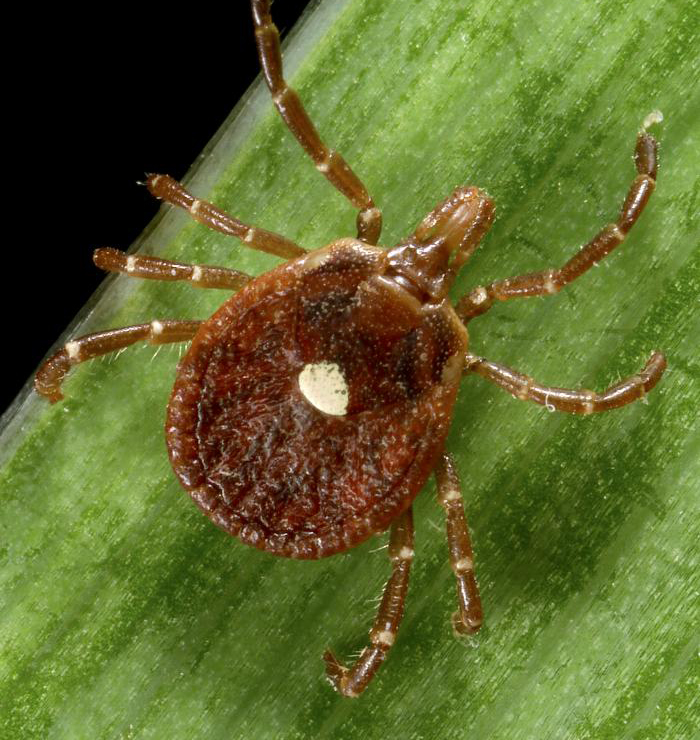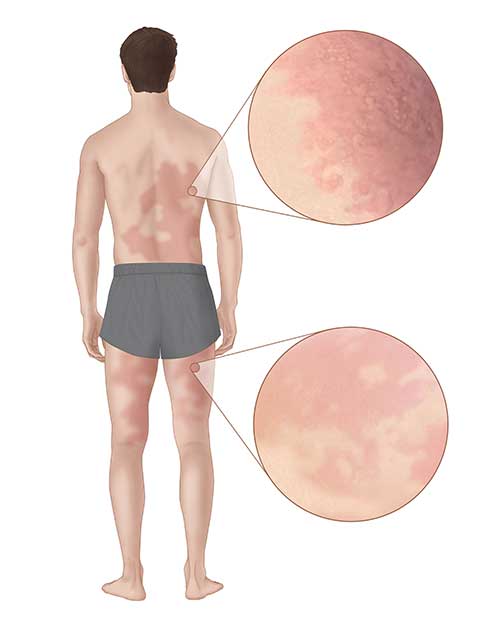Alpha-gal syndrome (AGS) is a serious, potentially life-threatening allergic condition. AGS is also called alpha-gal allergy, red meat allergy, or tick bite meat allergy. AGS is not caused by an infection. AGS symptoms occur after people eat red meat or are exposed to other products containing alpha-gal.
A CDC report showed that between 2010 and 2022, more than 110,000 suspected cases of AGS were identified. However, cases of AGS are not nationally notifiable to CDC, so it is not known how many cases of AGS exist in the United States. Additional data and research are needed to understand how many people are affected by this condition.
What are the symptoms of AGS?
AGS reactions can include:
- Hives or itchy rash
- Nausea or vomiting
- Heartburn or indigestion
- Diarrhea
- Cough, shortness of breath, or difficulty breathing
- Drop in blood pressure
- Swelling of the lips, throat, tongue, or eye lids
- Dizziness or faintness
- Severe stomach pain
Symptoms commonly appear 2-6 hours after eating meat or dairy products, or after exposure to products containing alpha-gal (for example, gelatin-coated medications).
AGS reactions can be different from person-to-person. They can range from mild to severe or even life-threatening. Anaphylaxis (a potentially life-threatening reaction involving multiple organ systems) may need urgent medical care.
People may not have an allergic reaction after every alpha-gal exposure.
If you think you may have AGS go talk to your healthcare provider.
AGS can be severe, and even life-threatening. Seek immediate emergency care if you are having a severe allergic reaction.
Can I get AGS from a tick bite?
Alpha-gal syndrome is primarily associated with lone star tick (shown here), but other kinds of ticks have not been ruled out.

- Yes, AGS is associated with tick bites. Evidence suggests that AGS is primarily associated with the bite of a lone star tick in the United States, but other kinds of ticks have not been ruled out. Other tick species have been connected with the development of AGS in other countries.
- More research is needed to understand the role ticks play in starting this condition, and why certain people develop AGS.
How do I know if I have AGS?
- AGS is diagnosed by an allergist or other healthcare provider through a detailed patient history, physical examination, and a blood test that looks for specific antibodies (proteins made by your immune system) to alpha-gal.
- Your healthcare provider may also recommend allergy skin testing.
What should I do if I have AGS?
- AGS should be managed under the care of an allergist or other healthcare provider.
- Many foods and products contain alpha-gal. You will need to work with your healthcare provider to understand which products you need to avoid.
- Prevent tick bites. New tick bites may reactivate allergic reactions to alpha-gal.
I have AGS, what foods and products do I need to avoid?
- Not all patients with AGS have reactions to every ingredient containing alpha-gal.
- Most healthcare providers recommend patients with AGS stop eating mammalian meat (such as beef, pork, lamb, venison, rabbit, etc.).
- Depending on your sensitivity and the severity of your allergic reaction, your healthcare provider may also suggest you avoid other foods and ingredients which may contain alpha-gal (such as cow’s milk, milk-products, and gelatin).
- Read food product labels carefully.
- Although very rare, some people with severe AGS may react to ingredients in certain vaccines or medications. Talk to your healthcare provider before taking a new medication or receiving a vaccine.
Who gets AGS?
Anyone can get AGS.
- Most reported cases of AGS in the United States are among people living in the South, East, and Central United States.
- While people in all age groups can develop AGS, most cases have been reported in adults.
What can I do to prevent AGS?

Preventing tick bites is important and may reduce your chances of developing AGS.
- Before you go outdoors
- Avoid grassy, brushy, and wooded areas, where ticks may be found.
- Walk in the center of trails.
- Treat clothing and gear with permethrin or buy pre-treated items.
- Use Environmental Protection Agency (EPA)-registered insect repellents

